I'm attempting to transform a pandas DataFrame object into a new object that contains a classification of the points based upon some simple thresholds:
- Value transformed to
0if the point isNaN - Value transformed to
1if the point is negative or 0 - Value transformed to
2if it falls outside certain criteria based on the entire column - Value is
3otherwise
Here is a very simple self-contained example:
import pandas as pd
import numpy as np
df=pd.DataFrame({'a':[np.nan,1000000,3,4,5,0,-7,9,10],'b':[2,3,-4,5,6,1000000,7,9,np.nan]})
print(df)

The transformation process created so far:
#Loop through and find points greater than the mean -- in this simple example, these are the 'outliers'
outliers = pd.DataFrame()
for datapoint in df.columns:
tempser = pd.DataFrame(df[datapoint][np.abs(df[datapoint]) > (df[datapoint].mean())])
outliers = pd.merge(outliers, tempser, right_index=True, left_index=True, how='outer')
outliers[outliers.isnull() == False] = 2
#Classify everything else as "3"
df[df > 0] = 3
#Classify negative and zero points as a "1"
df[df <= 0] = 1
#Update with the outliers
df.update(outliers)
#Everything else is a "0"
df.fillna(value=0, inplace=True)
Resulting in:

I have tried to use .applymap() and/or .groupby() in order to speed up the process with no luck. I found some guidance in this answer however, I'm still unsure how .groupby() is useful when you're not grouping within a pandas column.